#Sun Xizhi
Text

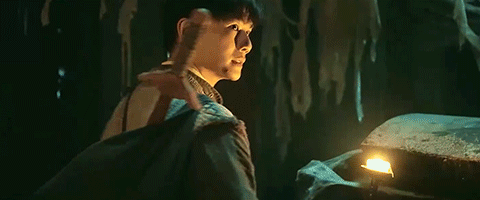
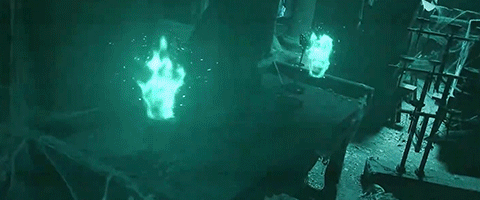
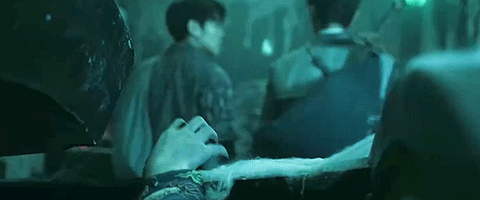

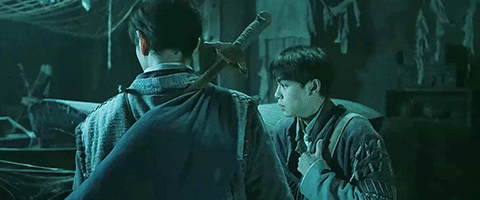
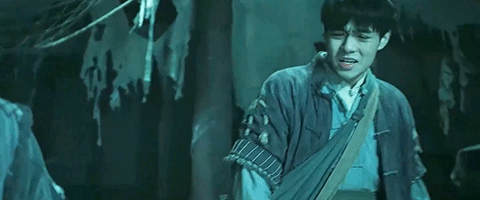
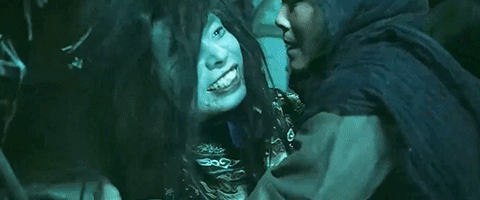


Yin-Yang Town Strange Talk | S01E01
Chinese Drama - 2024, 24 episodes
#Drama: Yin-Yang Town Strange Talk#CDrama#Ghost-Seeing Male Lead#Adventure#Partners in Crime#Historical#Short Length Series#阴阳镇怪谈#Yin-Yang Town Strange Talk#Investigation#Sun Xizhi#Chinese Drama - 2024#Drama: 2024#tw: Flashing GIF
19 notes
·
View notes
Text
Today's apocryphal Sun Tzu quote
Wanting to be right and wanting to know the truth are two very different things, indeed.

Qian Xuan - Wang Xizhi Watching Geese, 1295 AD
65 notes
·
View notes
Photo

Figure 1. Jiang Qingji’s fan calligraphy, UWM Special Collections (cs 000092).
Graduate Research: Chinese Scroll and Fan Work,
Part 11
Today we continue our exploration of calligraphic scripts in Chinese fan work, with further examples of Zheng vs. Qi approaches.
Figure 1 is a fan text written in a cursive script. According to Tai Jingnong (1902-1990), a scholar in Chinese poetry, calligraphy, and painting, cursive scrip first appear in the Han Ju Yan Wooden Slips, which were created from the Han (206 BCE-220 CE) to Jin Dynasty (265-420 CE).The cursive script from this period, such as that found in Monthly and Seasonal Records of Military Supplies from the Kuang-ti South Platoon in the Yung-yüan Era , originated from the hurried writing of the older clerical script (see my last blog).
In this fan, Jiang Qingji (1820-1880) copied a section of A Narrative on Calligraphy by Sun Guoting (646–691, see my blog on Zhang Jian), a very important treatise summarizing the esthetic values of Chinese calligraphy. However, the copying of the text is as far as the similarity goes. For Jiang 敏 in Figure 2 (a), the undulation of the brush breaks the stroke for a staccato thickening-and-thinning effect, whereas Sun’s counterpart in Figure 3 (a) is much more smooth and legato --- a typical characteristic of cursive script canonized by the calligraphic sage Wang Xizhi (303-361 CE, Figure 3 (b)). The variance, angularity, and exaggeration imbue Jiang’s brush with a strong sense of design.

(From left to right):
Figure 2 (a) : Detail from Figure 1
Figure 2 (b): Analysis of the Last Stroke in Figure 2 (a), made by Jingwei Zeng
Figure 2 (c): Detail from The Stele of Xuanmi Pagoda

(From left to right):
Figure 3 (a): Detail from Sun Guoting’s The Manual on Calligraphy
Figure 3 (b): Detail from Wang Xizhi’s On the Seventeenth Day
Figure 3 (c): Detail from Lu Ji’s Recovering from Illness
Figure 3 (d): Detail from Liu Sha Zhui Jian
Jiang’s design is much more apparent in 敏’s last brush (Figure 2 (a)). The brush tip goes rightward first, creates an angle, then makes a circle before it goes back to form a sculptural stroke (see Figure 2 (b)). The bulging monumentality of this stroke is analogous to its counterpart in Figure 2 (c) from the standard writing The Stele of Xuanmi Pagoda --- another calligraphic masterpiece in Chinese history inscribed by Liu Gongquan (778-865) in 841. According to Wang Shizhen (1526-1590), a famous writer and historian in the Ming Dynasty (1368 - 1644), this stele is the most telling example of Liu’s penchant for rippling tendon and bone in his creations. In our fan, Jiang complicated his brush movement by introducing a contrived sculptural design from Liu’s standard writing. Since standard writing can also be called “Zheng” writing in Chinese (see my previous post), contrived design can be seen as the embodiment of Zheng style, a conservative form, relying on established styles and techniques.
The monumentality of Liu’s Zheng style is derived from the Four Masters of Tang (Ouyang Xun, 557-641, Yu Shinan,558-638, Chu Suiliang, 596-658, and Xue Ji, 649-713), whose works are utilized to glorify the peace and prosperity of the dynasty. In Tai Jingnong’s opinion, a calligraphic untrammeled naturalness (Yi, 逸, which is the correlative of Qi, a style of originality, challenging recognized norms) is compromised by this propagandistic self-aggrandizement.
As a matter of fact, the last stroke in Sun’s original work (Figure 3 (a)) exhibits some untrammeled naturalness, as the end of last stroke does not have an obvious sense of design. A much more untrammeled and natural style can be seen in the similar strokes in Wang Xizhi’s On the Seventeenth Day (fourth century, Figure 3 (b)), Lu Ji (261-303)’s Recovering from Illness (ca.303, Figure 3 (c)) and Liu Sha Zhui Jian (ca. 98BC, Figure 3 (d)) --- they are guided by concepts of Yi & Qi.
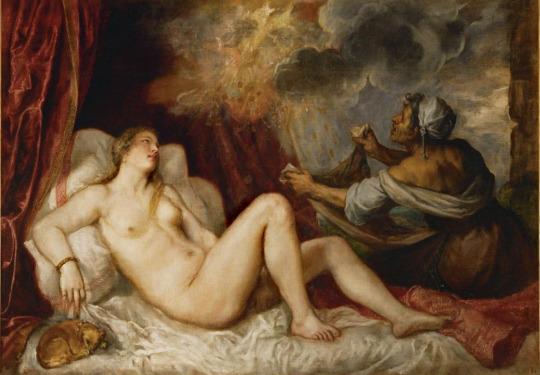
Figure 4. Titian’s Danaë
The contrast between premeditated design (Zheng) and the untrammeled naturalness (Yi & Qi) can be seen in the Western art, too. In Titian’s famous work Danaë (figure 4), the body of the woman to the left is derived from Michelangelo's female figure in the sculpture at the Medici Chapel entitled Night, possessing a great designing effect and sculpturality (similar to Jiang and Liu’s Zheng style); on the contrary, the white satin under her body is sketched by the bold slash of the brush (similar to Wang, Lu, and Liu Sha Zhui Jian’s Yi & Qi style), suggesting an unbridled idiosyncrasy, thereby foretelling the arrival of Baroque art.

(From left to right):
Figure 5 (a): Fu Shan’s imitation of Wang Xizhi’s Letter Written in the First Lunar Month
Figure 5 (b): Liu Sha Zhui Jian

(From left to right):
Figure 6 (a): from Figure 5 (a)
Figure 6 (b): from Figure 5 (b)
Figure 6 (c): from Figure 5 (a)
Figure 6 (d): from Figure 5 (b)
Figure 6 (e): from Figure 5 (a)
Figure 6 (f): from Figure 5 (b)
Fu Shan (1607-1684), who was the master for Qi’s style, considered premeditated Zheng’s design as a bete noire and he preferred untrammeled naturalness in his art. In Figure 5 (a), though it is Fu’s imitation of Wang Xizhi’s work, it bares greater resemblance to the wooden slip Liu Sha Zhui Jian in Figure 5 (b). Fu and Liu Sha Zhui Jian employed an unmodulated linearity (Figure 6 (a) and (b)), an untrammeled leisure (the “丿” in Figure 6 (c) and (d)), and an unembellished naturalness (the last horizontal line in Figure 6 (e) and (f)). Both of them epitomized Qi & Yi concepts.
It is worthwhile mentioning that Fu never had the chance to see Liu Sha Zhui Jian, which was excavated in 1906-1907 (see my previous Zheng Xiaoxu’s post), around three hundred years after Fu’s time. The striking similarity between Fu’s work and Liu Sha Zhui Jian testifies Fu’s inimitable capacity to imagine the broken part of the art history by tracing the path of calligraphic evolution.
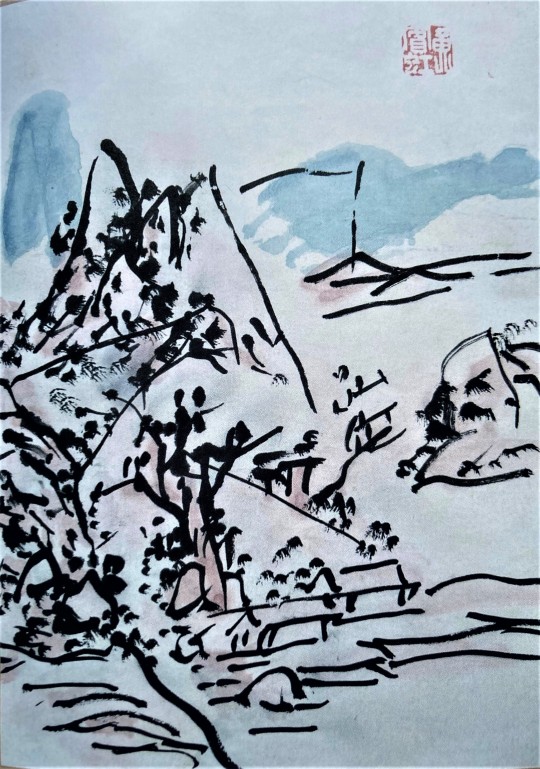
Figure 7: Huang Binhong’s Landscape Painting
Fu’s Qi legacy is carried on by Huang Binhong (1865-1955), an extraordinary Chinese modern landscape painter whose brushwork is characterized by raw, unmodulated, and untrammeled naturalness. The brushwork of Huang’s painting in Figure 7 bears a strong correlation to Fu’s brush in Figure 5 (a) and the satin of Danaë in Figure (4)---they are ad-libbed in the spur of the moment, implying an ephemeral yet highly-spiritualized transcendentalism.
According to The Petty Sayings of Painting, a famous thesis on Chinese painting esthetics, Chinese landscape painting is similar to the writing of cursive and running script --- the creation should not be restrained by rigor and workmanship (i.e., premeditated design, or Zheng). Dong Yuan’s (c. 934-962) interplay of voids and solids (see Figure 8, Dong’s The Rivers of Xiao and Xiang), Mi Fu’s (1051-1107) smoky mountains improvised by horizontal dots, Mi’s son Mi Youren’s (1074-1153, or 1086-1165) The Ink Play of Cloudy Mountains (see Figure 9), and Huang Gongwang’s (1269-1354) withered trees and lean mountains (see Figure 10, Huang’s Nine Submits after the Snow) exhibit a feeling of untrammeled naturalness. On the contrary, “only the vulgar artisans will deliberately create the meticulous paintings in order to please the audiences’ eyes.” The paintings made by this pleasing servitude is “drab and dour.”

Figure 8. Dong Yuan’sThe Rivers of Xiao and Xiang

Figure 9. Mi Youren’s The Ink Play of Cloudy Mountains

Figure 10. Huang Gongwang’s Nine Submits after the Snow
Yi & Qi also happens under Cezanne’s (1839-1906) hands. In Montagne Sainte-Victoire (Figure 11), Cezanne did not choose a refined brush to design remote mountains; instead, he created a simple calligraphic line as his abstract rendition of the landscape. For all these artists, mastering a skill of unpremeditated and sophisticated disegno (Zheng) is not difficult (and indeed, they did so when they were young); what challenged them most was how to get rid of formulaic design and create a free, simple, and impromptu Yi & Qi effect. By doing this, they presented their own characters rather than representing the rules and regulations of traditional and formulaic style.

Figure 11. Cezanne’s Montagne Sainte-Victoire
View more posts from the Zhou Cezong Collection of Chinese scroll and fan work.
– Jingwei Zeng, Special Collections graduate researcher.
#graduate research#Jingwei#Chinese calligraphy#Chinese fans#Chinese art#Chinese paintings#Chinese history#art history#calligraphy#calligraphers#Zheng style#Qi style#Jiang Qingji#Sun Guoting#Liu Gongquan#Wang Xizhi#Lu Ji#Liu Sha Zhui Jian#Fu Shan#Titian#Michelangelo#Huang Binhong#Dong Yuan#Mi Fu#Mi Youren#Huang Gongwang#Paul Cezanne#Zhou Cezong Collection#Tse-Tsung Chow Collection
36 notes
·
View notes
Text
Historical Figures:
1) Sun Zi (Sun Tzu) - a Chinese general, military strategist, writer, and philosopher who lived during the Eastern Zhou period of China. He is traditionally credited as the author of The Art of War. (Wikipedia)
2) Cao Cao - Chinese poet, statesmen, and warlord during the Three Kingdoms period (220 - 280 AD), of which he is considered a central historical figure. (Wikipedia)
3) Woman from a detail of the painting 王蜀宮妓圖 ("Court Ladies of the Former Shu State", aka, "Four Beauties") by Tang Yin, a Ming Dynasty painter. The image in the douyin is likely someone else's recreation of the iconic painting. (Baidu auto-translated to English)
4) Zu Chongzhi - astronomer, mathematician, politician inventor, and writer during the Liu Song and Southern Qi dynasties. He was most notable for calculating pi as between 3.1415926 and 3.1415927, a record which would not be surpassed for over 800 years. (Wikipedia)
5) Wang Xizhi - calligrapher, political, general, and writer during the Jin Dynasty. He is considered by many as one of the greatest calligraphers in history, and is known as one of the Four Talented Calligraphers in Chinese culture. (Wikipedia)
6) Hubilie (Khubilai Khan) - the grandson of Genghis Khan and the founder of the Yuan Dynasty, which lasted from 1271 to 1368. (Wikipedia)
#douyin#video#tiktok#chinese history#the paintings all looked familiar but the only one i could name was khubilai khan and even then i thought it was genghis khan at first 😂#i am good at searching keywords tho 😌#wang xizhi was the hardest one to find/match lol#that's his pic if you look on his chinese wiki page tho#忽必烈有点儿萌
600 notes
·
View notes
Photo
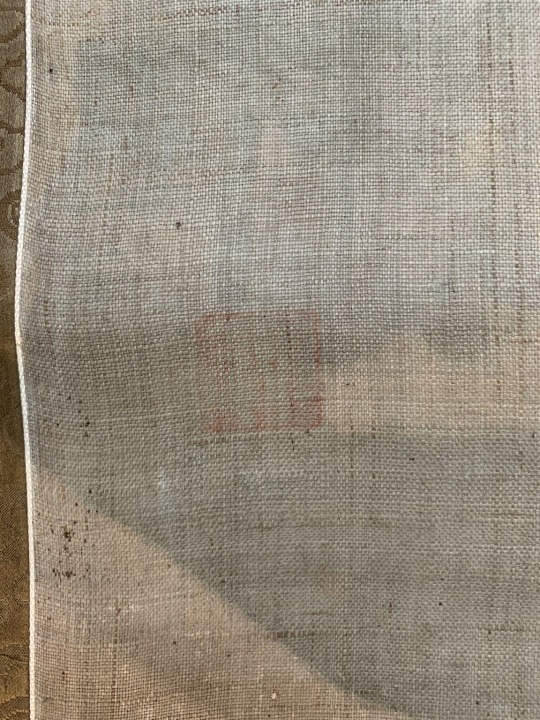
Poem, Yun Sun, early 18th century, Brooklyn Museum: Asian Art
Calligraphy. Poem, consisting of three short lines written in large, free-hand script on linen or silk. Text of the poem to be translated. Yun Sun served as Minister of the Bureau of Rites. He was one of the most important calligraphers of the Joseon period, often compared in Korea to the great Chinese calligraphers. He and his primary pupil, Yi Gwang-sa, dominated the calligraphy practice of the first half of the 18th century. He strove to emulate the style of Chinese calligrapher Wang Xizhi (321-379), which he learned through printed copies.
Size: scroll: 74 3/16 × 20 13/16 in. (188.5 × 52.8 cm) image: 40 3/8 × 14 15/16 in. (102.5 × 38.0 cm)
Medium: Hanging scroll, ink on linen
https://www.brooklynmuseum.org/opencollection/objects/224847
3 notes
·
View notes
Link
https://www.viki.com/celebrities/23758pr-sun-xi-zhi
0 notes
Text
Biography of Xie Daoyun
[From JS096.]
Wang Ningzhi's wife, Ms. Xie, courtesy name Daoyun, was the daughter of the General who Calms the West, Xie Yi [JS079]. She was intelligent and perceptive, and had a talent for debating. Her junior uncle An [JS079] once asked:
[In] the Mao Poetry, which phrases are extremely delightful?
Daoyun said:
Jifu made hymns, majestic like the pure wind. The eternal affection of Zhong Shanfu, thereby calming his heart.
An spoke of [her] being a refined person of the furthest depths. Again they were once gathered inside, when soon snow suddenly came down. An said:
What does it resemble?
An's elder brother's son Lang said:
Scattered salt in mid-air almost can be the model.
Daoyun said:
Even more [?] willow catkins rising because of wind.
An was greatly delighted,
[This is Shishuo xinyu (SSXY) story 2.71. They are playing a rhyming game where the host proposes a topic with a seven word line (shortened in the JS version) and each participant responds with a rhyming seven word line of their own.]
At the beginning of her marriage to Ningzhi, when she returned [for a new wife's customary one year anniversary visit to her parents], she was considerably unhappy. An said:
Gentleman Wang is the son of Yishao [Wang Xizhi, JS060] and is not bad, why are you resentful?
She replied:
For uncles in this house there are Ada and the Palace Gentleman, among the crowd of cousins there are also Feng, Hu, Jie and Mo. [I] had not thought that among heaven and earth there would be a Gentleman Wang!
Feng is said to be Xie Shao, Hu is said to be Xie Lang [JS079], Jie is said to be Xie Xuan, Mo is said to be Xie Chuan, all are their child names.
[This is SSXY story 19.26. The identification of the individuals listed by Xie Daoyun is not certain, the SSXY commentary gives a different one than the JS.]
She also once mocked Xuan that the growth of his studies was not advancing, saying:
Are there mundane occupations going through your heart, or is there a limit to your Heavenly lot?
[This is SSXY story 19.28]
Ningzhi's younger brother' Xianzhi was once talking and discussing with a visiting guest, his words and reasoning was about to yield. Daoyun dispatched a servant girl to inform Xianzhi, saying:
[I?] desire to be a minor gentleman loosening the encirclement.
[She] then arranged a blue-green chiffon walking screen to hide herself, and explained Xianzhi the earlier discussion. The guest was not able to make her yield.
When she came across the difficulties of Sun En [JS100] [in 399 AD], she raised up and arranged herself like [before?]. When she heard her husband and sons had been murdered by the traitors, only then [?] did she instruct the servant girls to carry [her] carriage, drew a blade and set out from the gates. In the chaos troops arrived little by little. She killed several people by her own hand and then was captured. Her maternal grandson Liu Tao at the time was a few [?] years old. The traitors also desired to murder him. Daoyun said:
This affairs is about the Wang household, why shut off [?] another family? Certainly if it is to be like this, [I] would rather first be killed.
En, though he was noxious and cruel, had a change in appearance, and then did not murder Tao.
A widow after this, she lived in Kuaiji, [those] within her house could not but be rigorous and respectful. The Grand Warden, Liu Liu, heard of her fame and requested to converse and discuss with her. Daoyun had a long-standing knowledge of Liu's fame, [he?] likewise did not impede himself [?]. She then bound up her hair with a hairpin and sat on a plain cushion within a screen. Liu with a bundle of dried meat and an orderly belt came to a separate couch.
Daoyun's style and manners were lofty and striding across [?], her expressions presented purely and refined. She first reach family affairs, her desolate defiance flowed continuously, proceeding calmly to respond to questions and viewpoints, her expressions and reasoning unobstructed. Liu withdrew and sighed, saying:
[Her] worth has of late not been seen. Looking at and examining [her] words and manners, makes a person's heart and body both submit.
Daoyun likewise said of him:
My person has gone on to wither and perish [?], and only now [have I] met this gentleman. Listening to him questioning, particularly opens a person's breast and receptacles [?].
Earlier, the younger sister of Zhang Xuan of the same commandery likewise had genuine talent, she married into the Gu clan. Xuan always spoke of her, and considered her a match for Daoyun. There was an aiding nun [?] who wandered among the two families. Someone asked her, the aiding nun replied, saying:
Lady Wang's spirit and feelings are relaxed and bright, because of that she has the manners and airs of the [Sages] beneath the Grove. The wife of the Gu family's pure heart is the glare of jade, is herself from this the flower of the women's quarters.
[This is SSXY story 19.30]
Daoyun's composed poetry, rhapsodies, eulogies and odes are also transmitted to the [current] era.
[The Suishu bibliography lists Xie Daoyun's Collected Writings in 2 scrolls, but this is no longer extant except in fragments.]
4 notes
·
View notes
Text
Biking & Hiking SiFenZiWei Mountain 四分子尾山
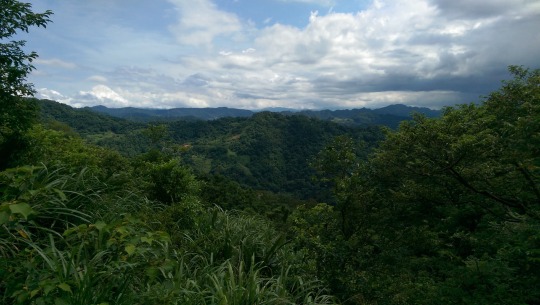
I’m not sure where I first heard the saying, or whether I made it up myself, but it has been said that “Taipei is Taiwan on steroids”, by which it is meant that examples of almost all the things that are great about Taiwan can also all be found around the Taipei basin: mountainous vistas with breathtaking views, hot springs, delicious and diverse food options, great public transport infrastructure, interesting and historical architecture, waterfalls, and of course hiking. Visitors to Taiwan staying in Taipei don’t need to travel too far to enjoy many of things Taiwan has to offer as the premier living and touring location in East Asia. That’s also been a bit of a problem too in a way. For a long time when I was living in Taichung and in the South it was a source of predictable irritation to read the blogs and watch the videos (the endless parade of youtube videos!) from someone fresh off the banana boat claiming to have “discovered the real Taiwan” but who hadn’t made it further than Banciao or Danshui. I even made a series of travel posts about this called “Not Taipei: A Real Taiwan Trip To ...”.
Yet, when I was forced to come up here to live as part of my job, I came to see why Taipei was such a convenient city to be based from to experience much of what Taiwan is about. Make no mistake here though. If Taichung, Tainan, Kaohsiung, Taidong, Hualien, Pingdong, Chiayi, & Luodong had been equal beneficiaries of the immense amount of preferential spending from the Central Government that Taipei enjoyed since 1949 (and still does), those cities would easily rival and in many cases beat Taipei as the best of Taiwan’s urban spaces, if only because the weather in those parts of the country isn’t so routinely and monotonously overbearing. Nevertheless, when it isn’t raining, there’s a lot to do in and around Taipei within fairly easy reach. For EVA and I that primarily means hiking.
Just over a week ago, following the official end of the annual Noah’s Rains (known in Taiwan as the Plum Rain Season, and known in Taipei for there being no ‘off switch’ for three weeks solid) I decided to explore a little of the area out of the back of (to the south southeast) Xizhi and Xike, two commuter towns in the thin strip of New Taipei City wedged between Taipei City and Keeling City. Having had a look at Google Maps and Maps.ME I saw what looked to be a promising route for an exploratory mountain ride on my trusty Yamaha, up out the back of Academia Sinica, along a ridge and down into Xike. See the map below. (I’ve added red dots as guide lines for those who want to also ride/cycle/hike it).
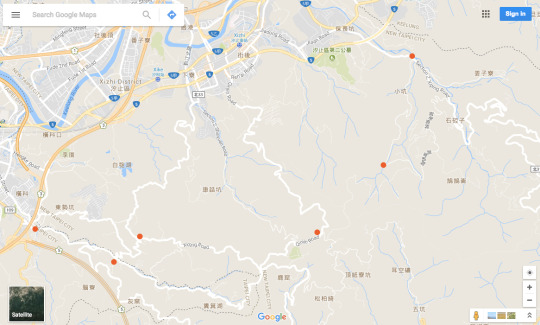
Before I get into it, a couple of caveats first. As you will see my photos come from my camera phone which works well with direct light in the same way vampires love garlic, holy water, crosses, and sunbathing. I also must admit having little to no patience for fiddling with the meagre range of semi-impotent settings the camera app does have. The result is often that the ratio of usable to ‘delete later’ photos at the end of any trip is roughly 1 in 10, and many of the good ones are washed out and over saturated or under lit or poorly focused. One day I’ll buy a real camera.
This is a longish post which actually combines two separate visits to the same area so lets put a line break here ...
Setting off out the back of Academia Sinica on Jiuzhuang Street (Section 1) once I passed the turning for Route 109 to Shenkeng the road quickly became smaller and quieter (Section 2) and the seething mass of population dense Taipei was replaced with a few scattered locals and quite a few hikers. Stopping at a bend in the river, I could see why. There are a number of hikes in this immediate area, some of which I intend to return to later ...



Driving on, and with a little help from Google, I located the first turn (across that little bridge in the picture below) to get up into the mountains. A strange little road that looks at first like it’s a private lane with a dead end but which actually rises continuously and very steeply to get you up on the ridge ...

There’s a couple of small adjustments to get on to the well paved and thankfully sparsely used Xiding Road. Below you need to take a right turn here ...
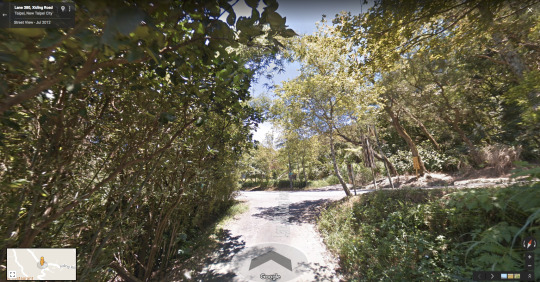
... and here you need to resist the urge to hook left and simply continue straight on that seemingly narrow lane ...
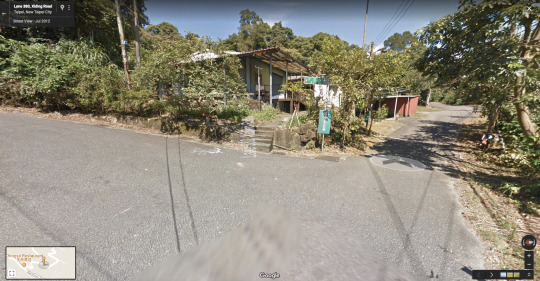
Once on Xiding Road, the quiet views across the mountains are expansive and very impressive, as seen in the header photo to this post and below ...
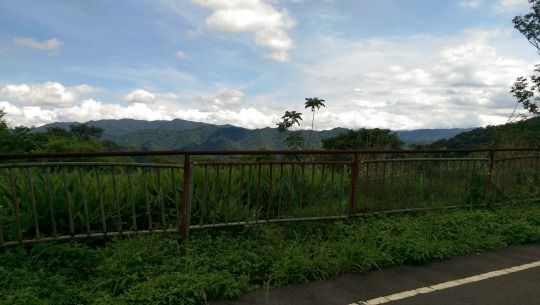
I puttered along at about 35kph, taking in the views. I love country lanes with no centre line marking but maybe that’s because although I’ve adapted to a city mouse lifestyle I was raised as, and will always at heart be, a country mouse.
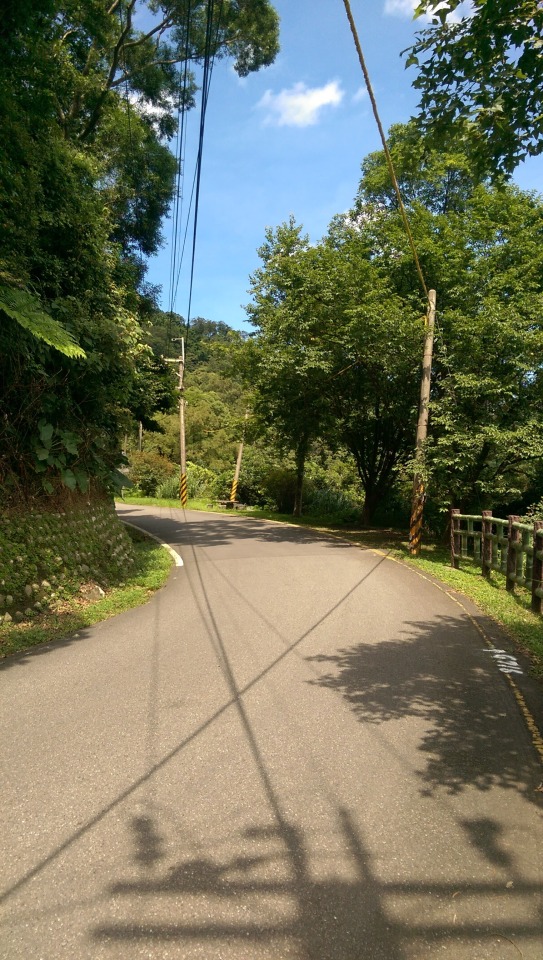
Interesting also to see this apparently relatively new wooden building on the side of the road, something you don’t see much of in the north ...
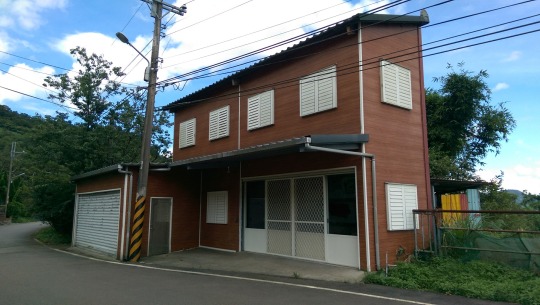
After about twenty minutes, I came to this junction. You take a left here, up the hill onto Qinjin road ...

At, the top, looking back is a statue declaring the local area and culture and another interesting tall glass & steel building with an excellent viewing platform. Looking out south, more impressive vistas ...
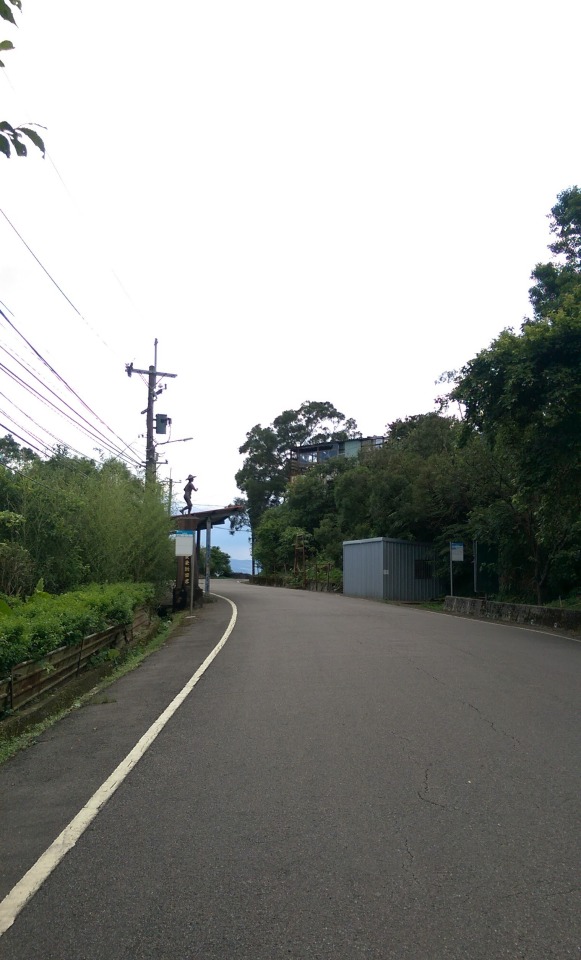


A little further on is the 光明禪寺 Guanming Buddhist Temple which has two parts. The section overlooking the mountains on the right side of the road (East direction) ...
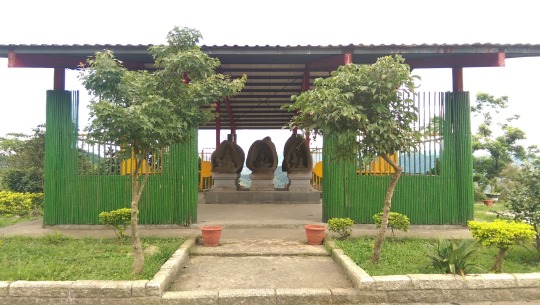


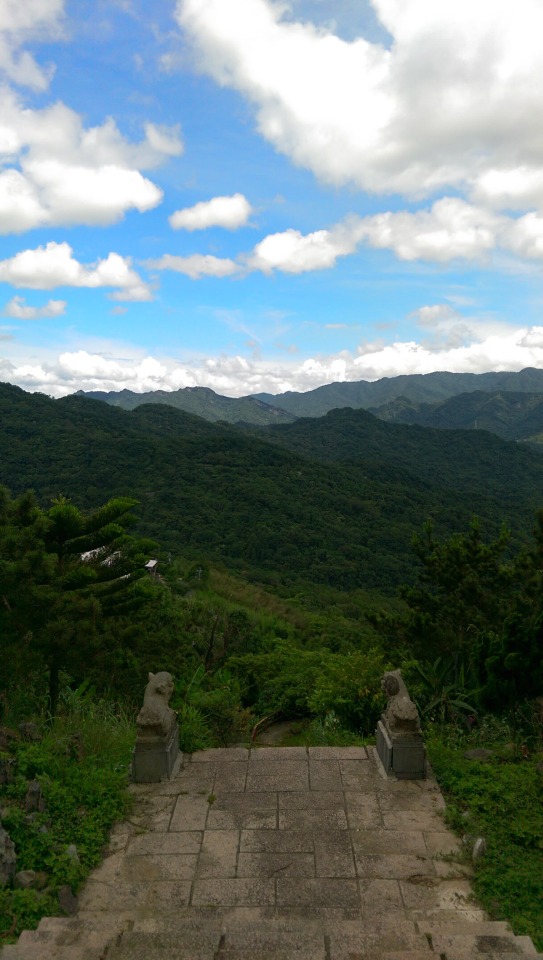

... and the main temple across the road ...
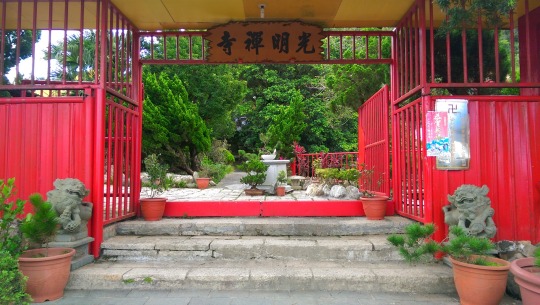
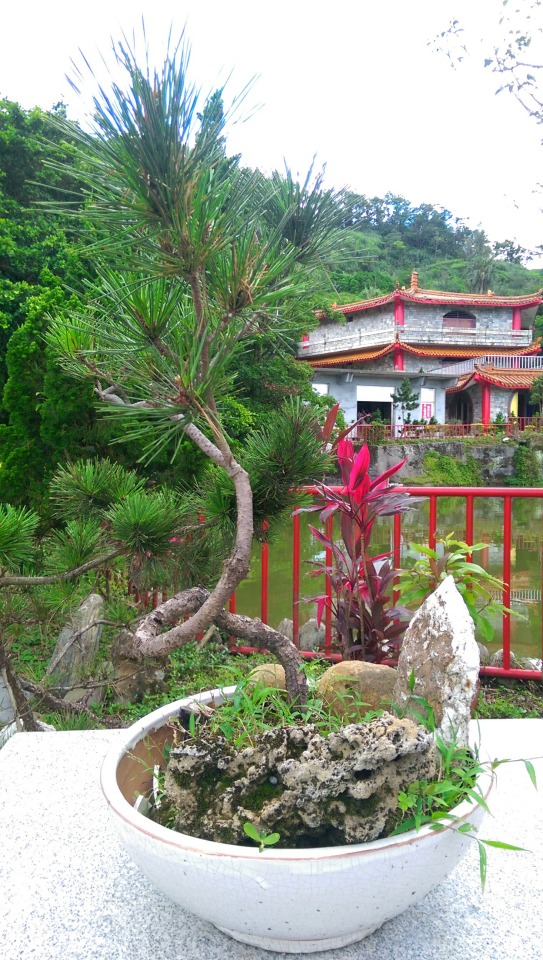
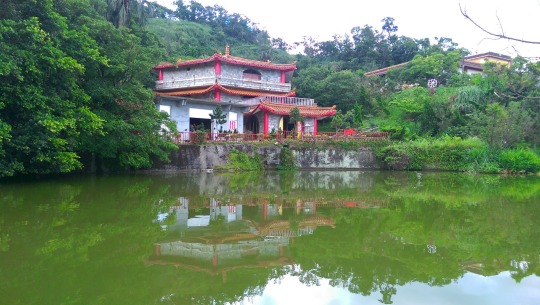
I then took another left up through this gate ...

Climbing ever higher yet, I spied the Taipei basin through the bushes. Although it has terrible lighting and is indistinct, I like this shot because you can see both the Keelung and Danshiu Rivers glinting with sunlight in the distance ...
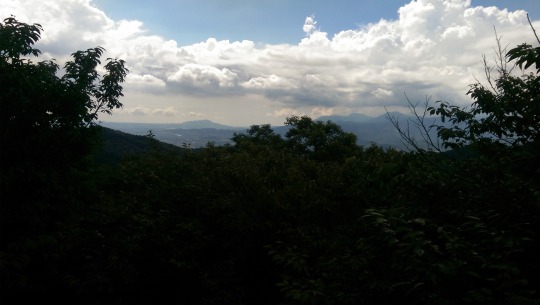
Another Alpine’ish wooden building along the road. Aesthetically this is a very pleasing change from the usual concrete, tile, and steel that Taiwan is awash with ...
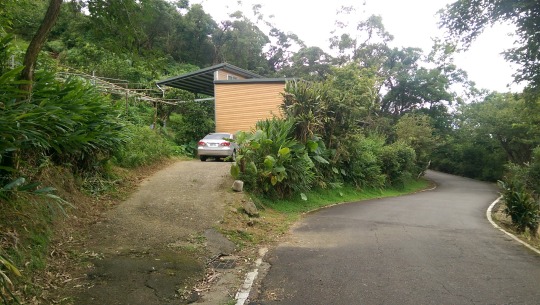
When you get to this sign, and the turning opposite, turn right up on to Shixi Road...

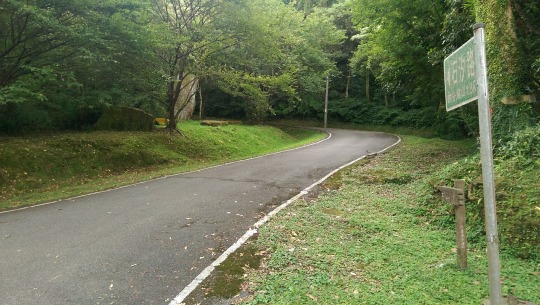
... and here was my final turn. Easy to miss, it’s a pretty rough jarring concrete road that requires low speeds and it not advisable in wet conditions ...
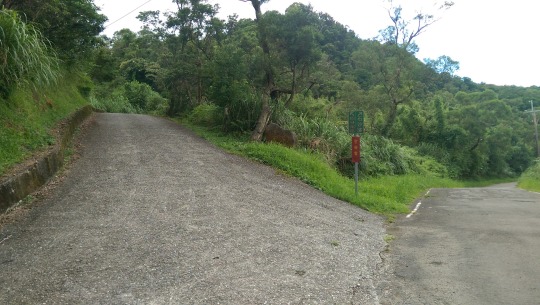
Now, bear in mind that I had no idea what was on this road other than eventually it would lead me to Xiping Road Section 2 and back down into Xike. As I came to a peak in the road I first noticed this promising view ...

Aside from the Pacific glistening in the afternoon sun that triangular hump you can see is Keelung Mountain which lies opposite the charming hillside town of Jiufen. Across from this point in the road was a small parking area and this ...
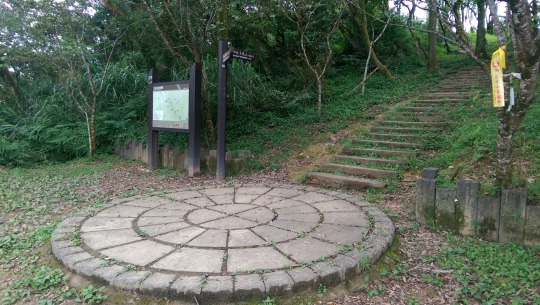

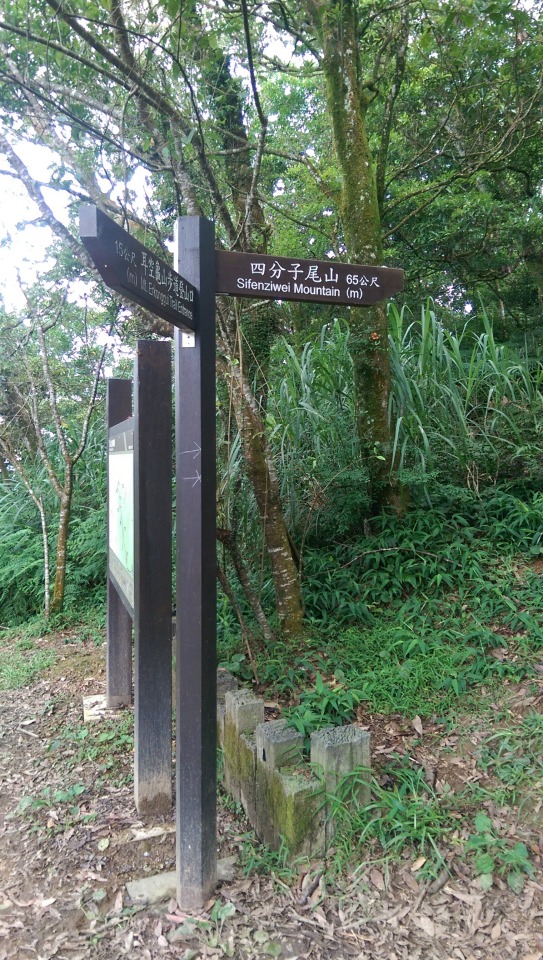
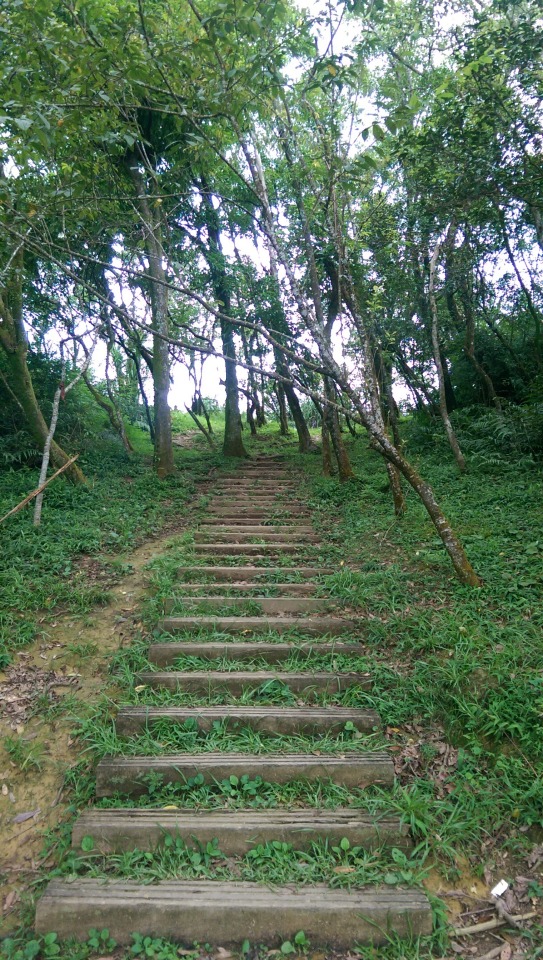
I had no idea what SiFenZiWei Mountain was but seeing as it was only 65 meters away and I’d been sitting on the bike for quite a while, I thought I’d stretch my legs a little and check it out. I’m glad I did because when I did ...
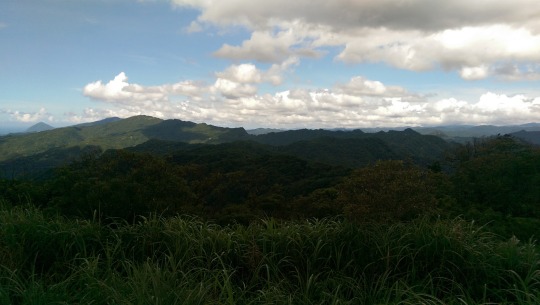
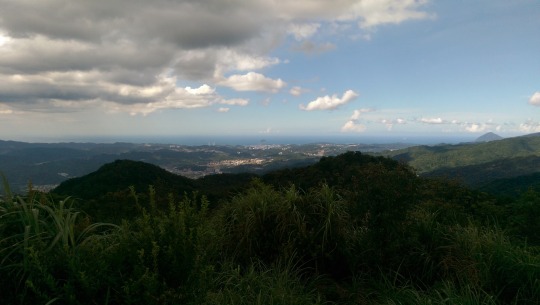
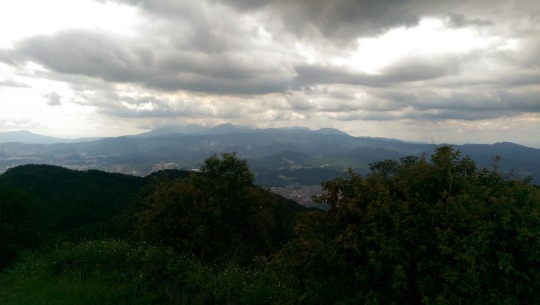

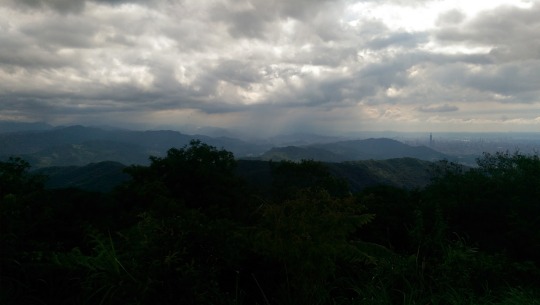

That’s the view starting from the south east and looking all the way round 270 degrees to the south west. It was a simply stunning panoramic visage of the entire area including most of the Datuen Mountain Range. SiFenZiWei, roughly meaning ‘four points tail mountain’, is one of those rare places in Taiwan where you get high enough to see in all directions without an interrupted view. I took a lot more photos but as you can see from above with the sun in my face my camera phone struggled to either get enough light or not be washed out in it. I also took video of planes coming into land at Songshan on Runway 28 which was, as a former trainee pilot, fascinating to see how they performed a controlled loss of altitude and lined up on final through the Keelung Valley. If you focused hard enough you could even see the moment they touched down.
Spying an entrance to a hiking trail leading west down off the mountain (below) I resolved there and then to return with EVA the following week to climb up to the same point ...

The next Sunday, I drove with EVA out along the No.5 to Xizhi to Ren’ai then Qinjin Road and up to the Wei Xing Jinguan, a temple which I had found was the starting point of the trail I had seen a week before. Here’s the route to SiFenZiWei ...
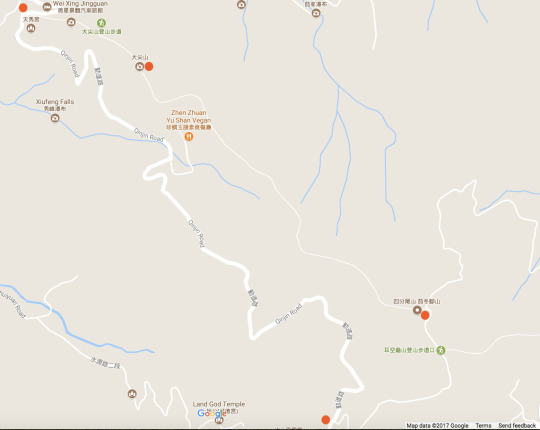
The first stage was the rise to Dajian Mountain, a very steep and pretty much unrelenting climb up stone steps. Although only 0.7 kms, this was by far the hardest part of the entire trail but, as with most mountain hiking, there’s a direct correlation between pain of the ascent and the benefits of the views once at the top. Dajian did not disappoint, providing both a very pleasant and cool resting area (awash with butterflies) including a pagoda with an excellent view ...

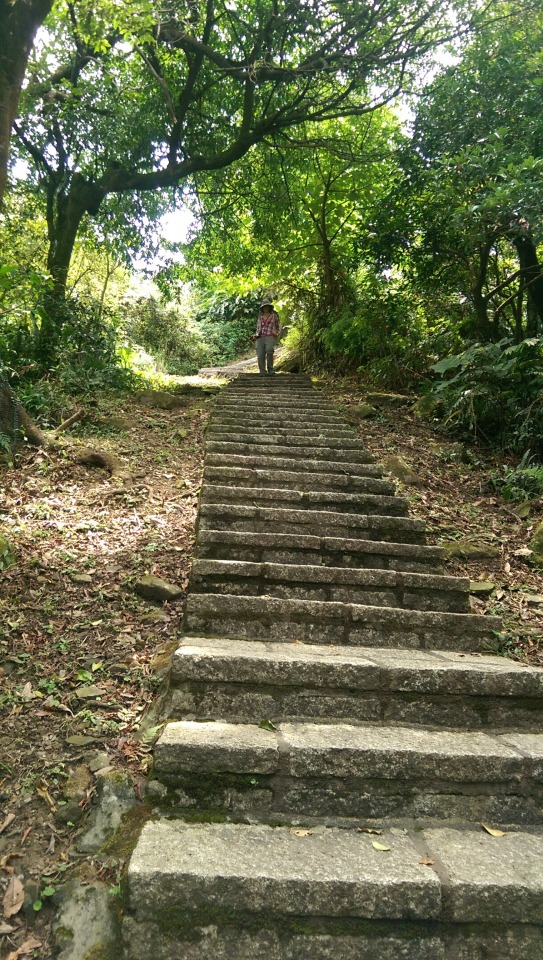
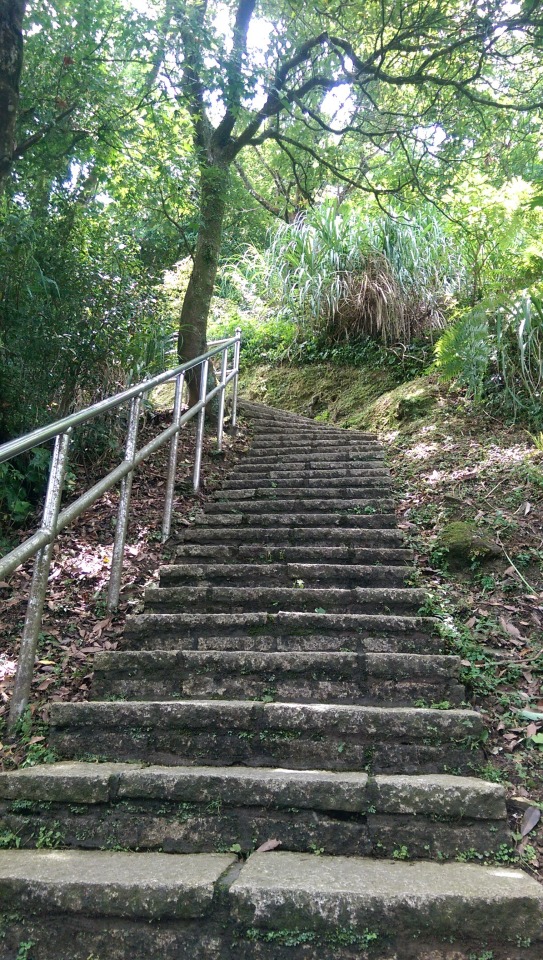
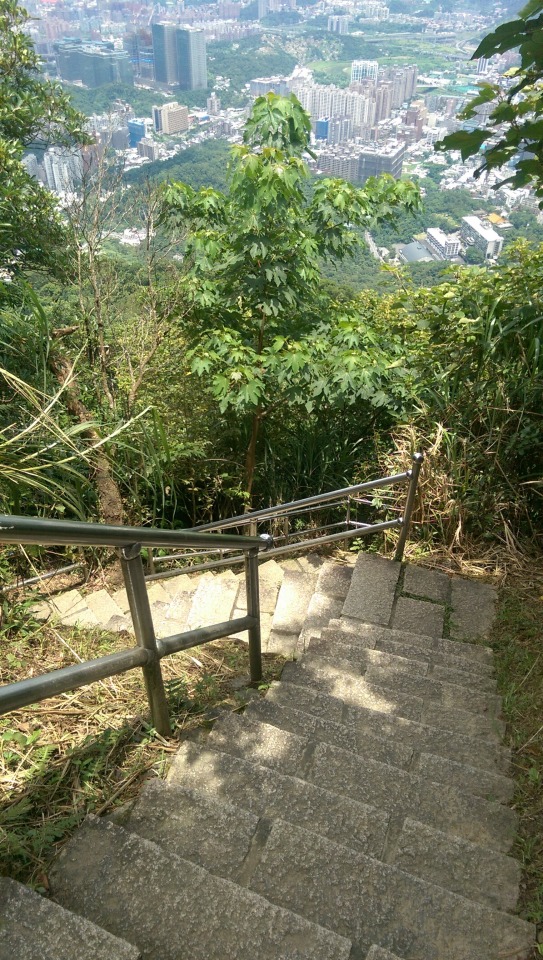
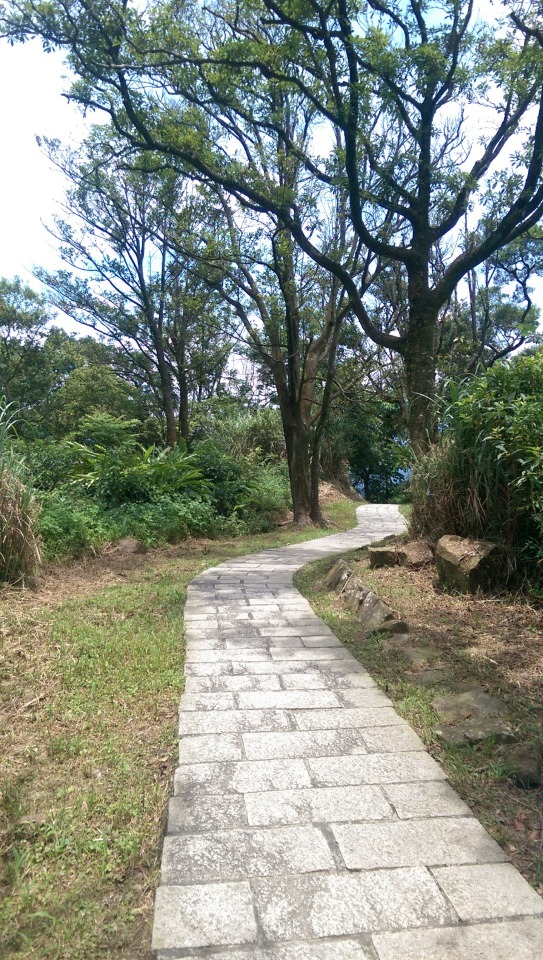

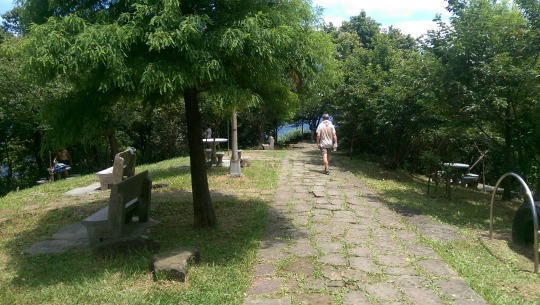
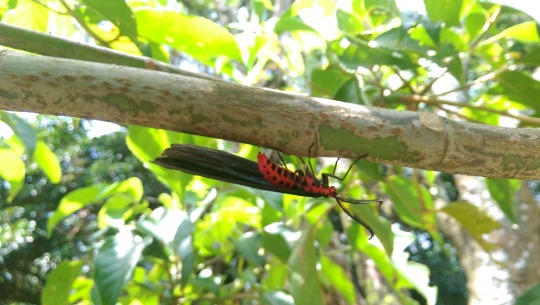


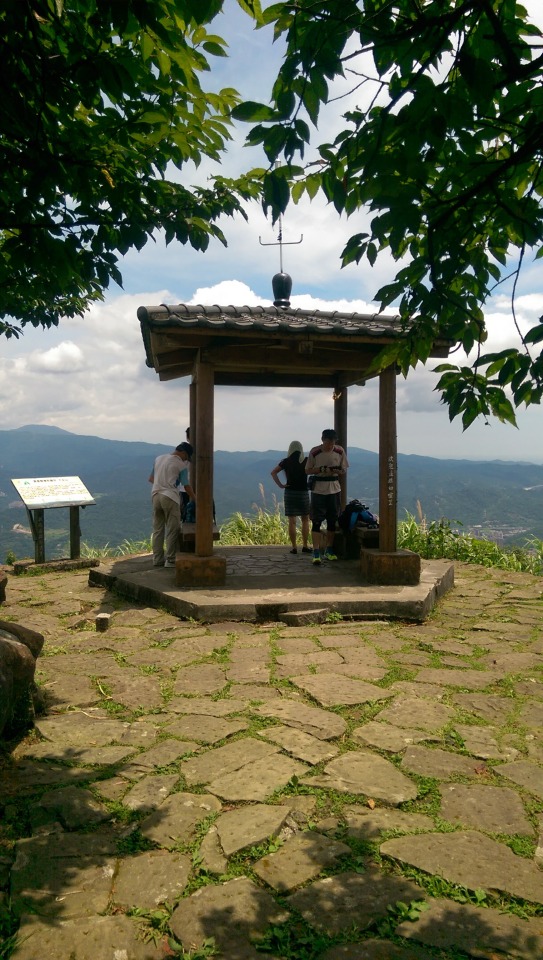

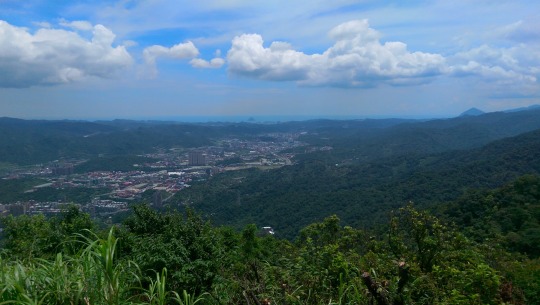

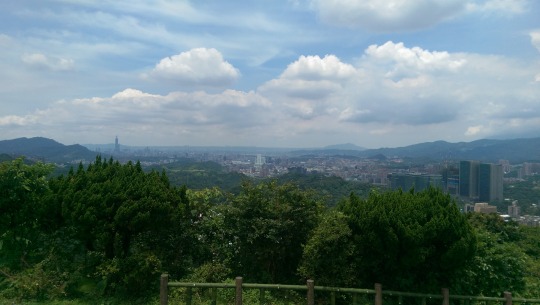

As can be seen from the map above and the sign below, SifenZiWei was about 2km further on from this point.
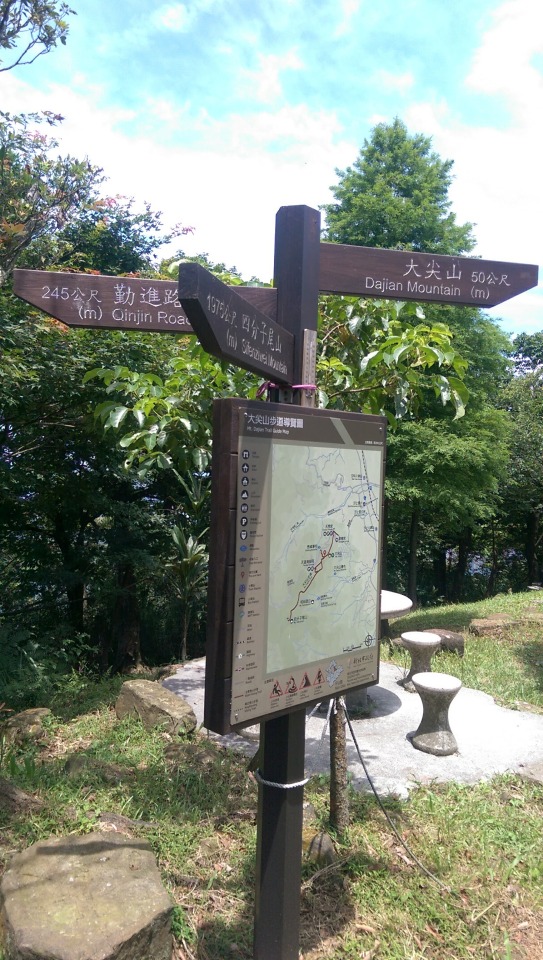
The next sequence of photos are the route from Dajian to SiFenZiWei but I took all of them on my way back down from the peak to Dajian so the direction is the reverse ...
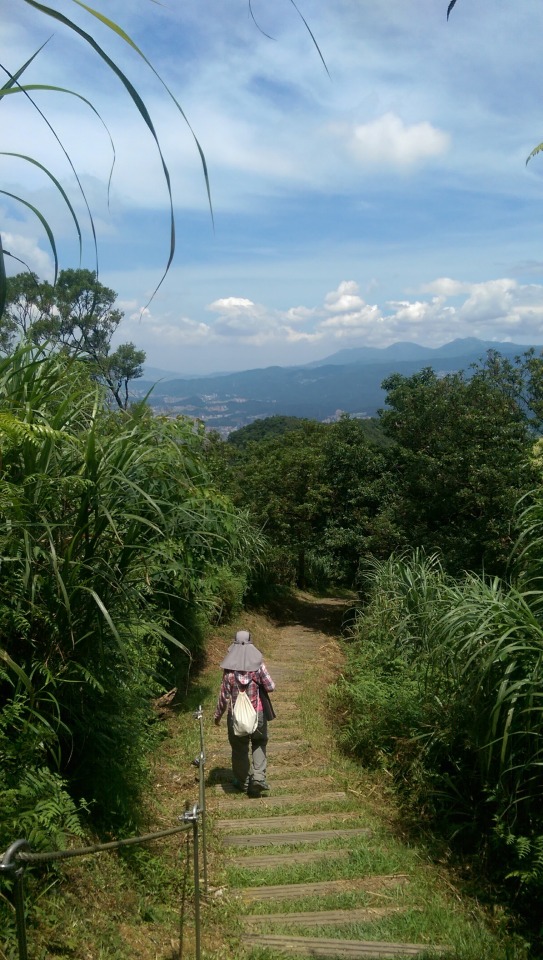

For the intrepid ‘off-road’ hikers, below is the historic trail from Xike ...
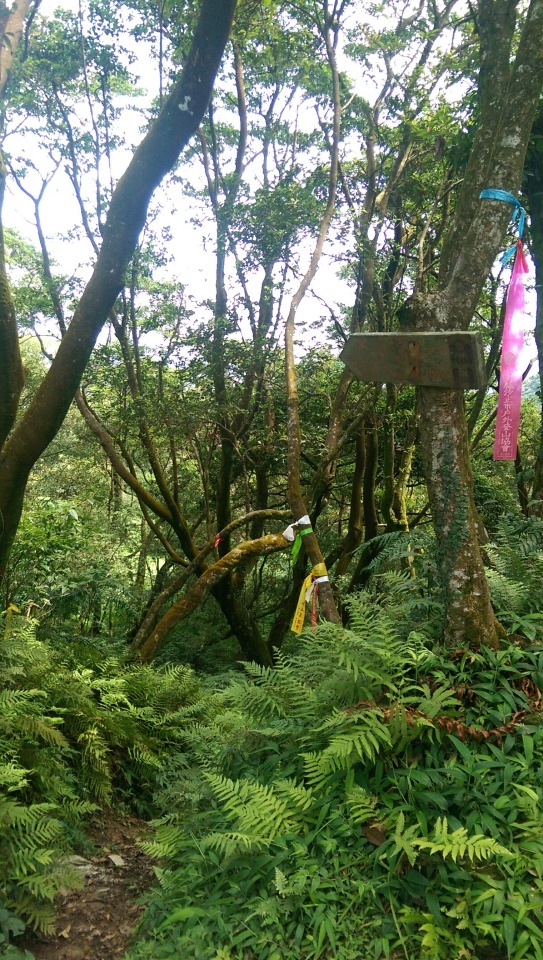
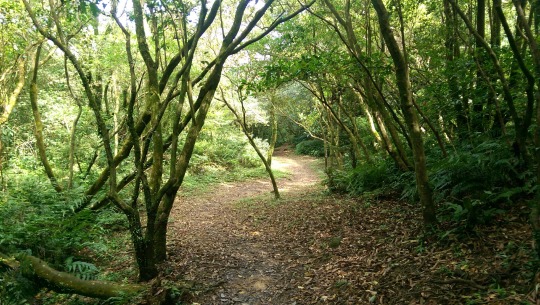

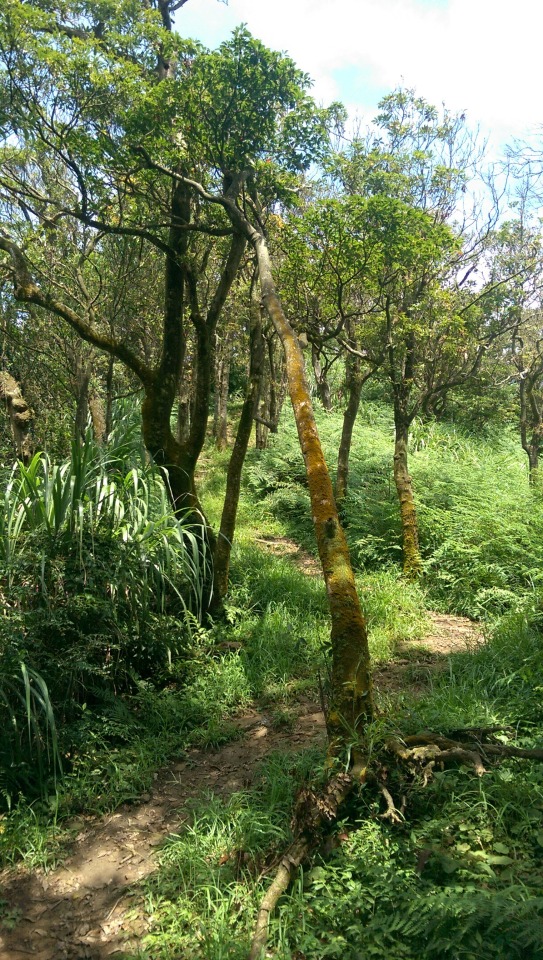


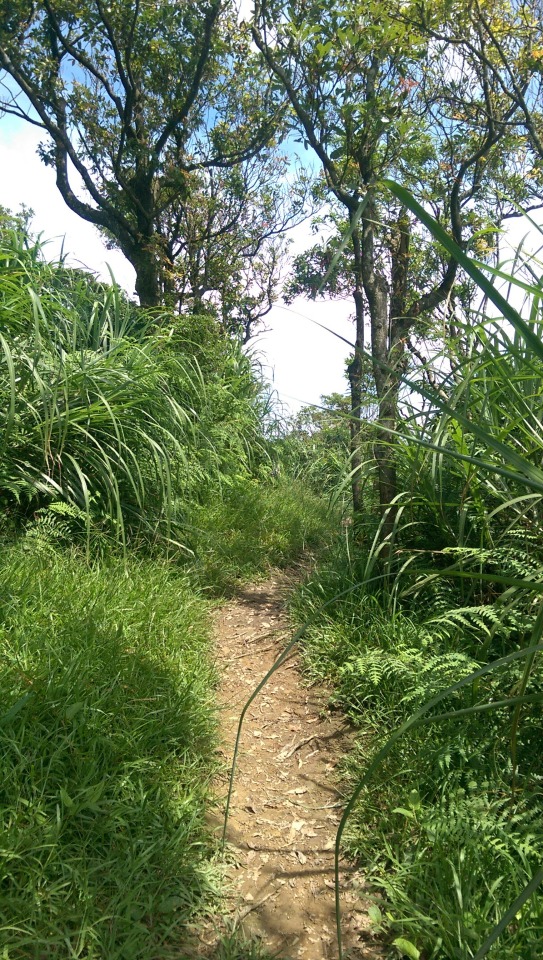
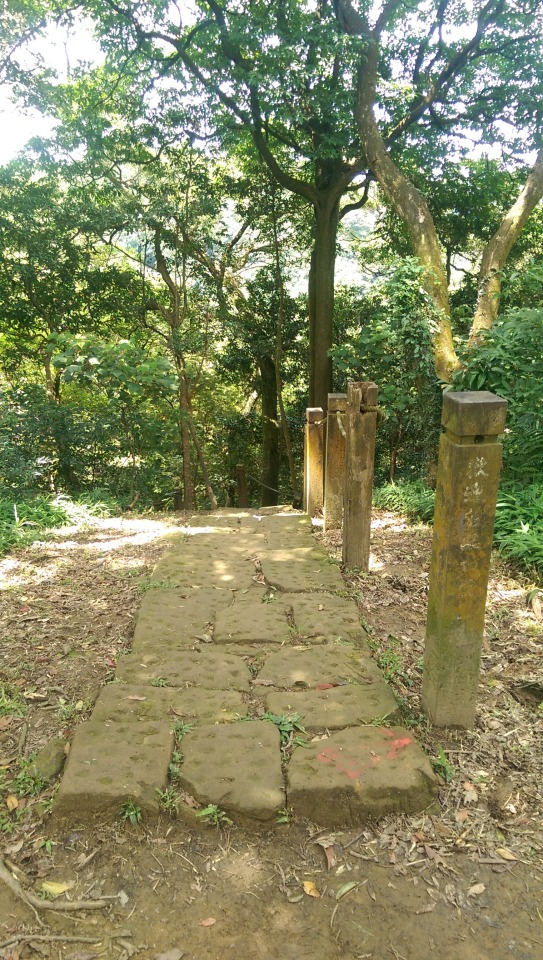
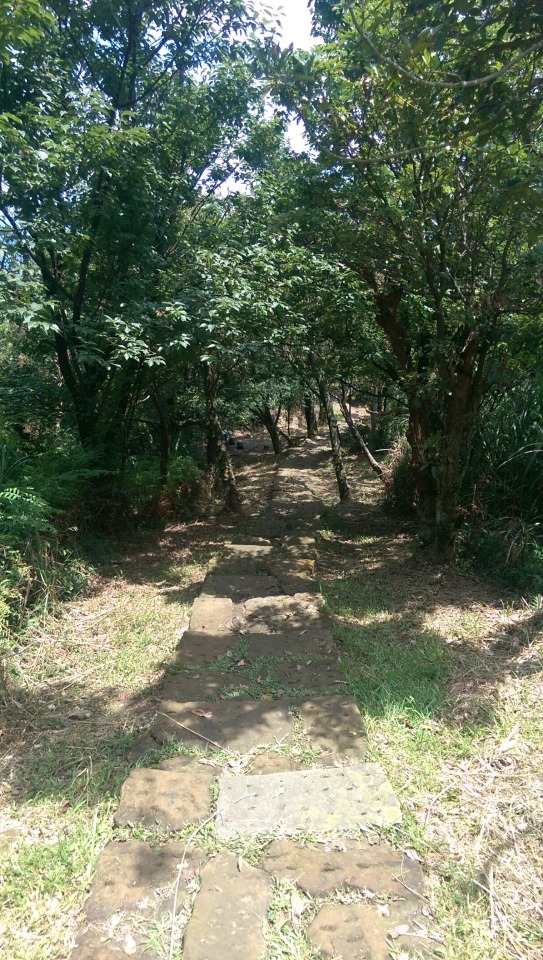
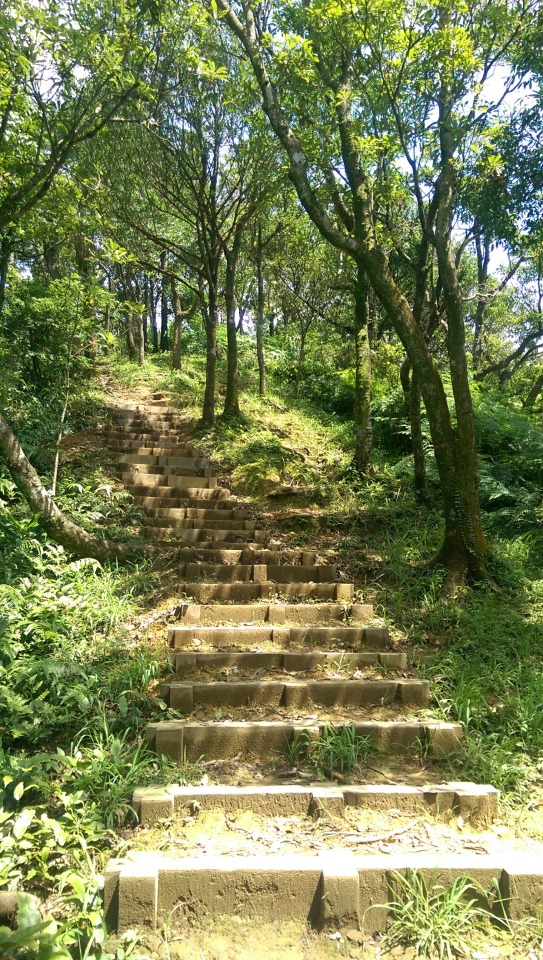
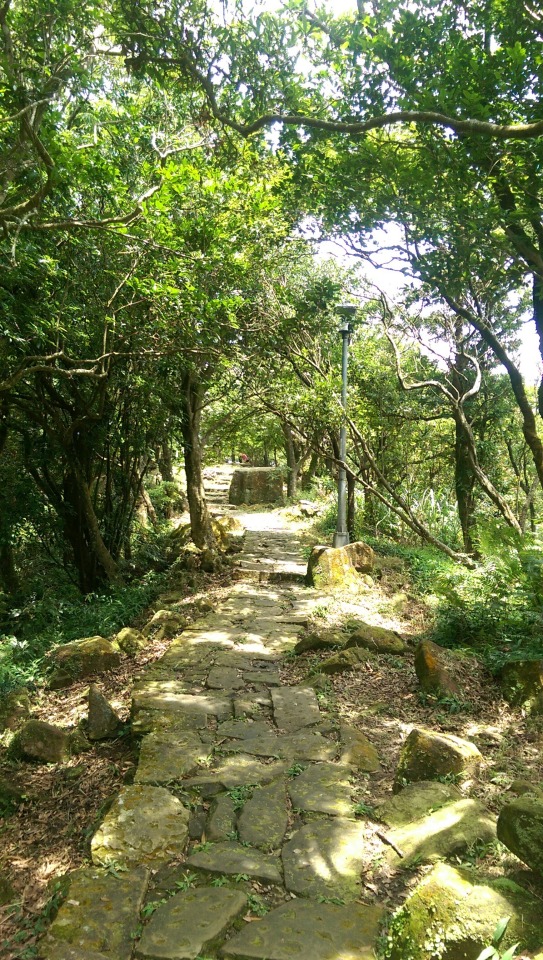
After about two hours total time since setting off from the temple, we reached SiFenZiWei again, this time basking in the bright morning light and with planes departing from Runway 10 soaring not far overhead ...

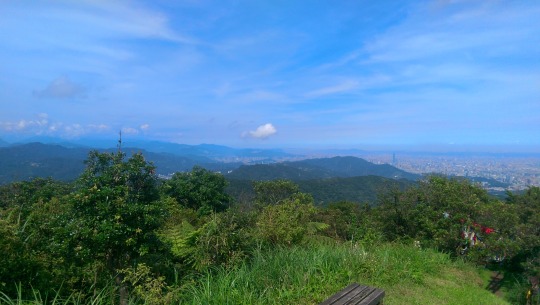
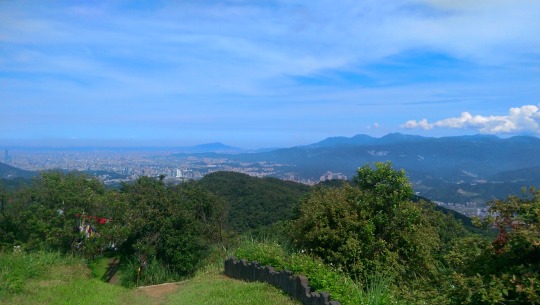

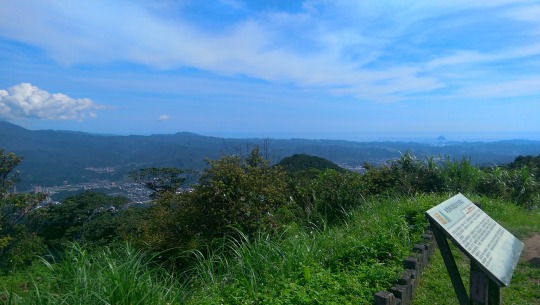
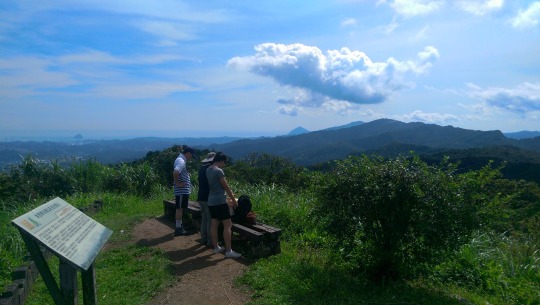
EVA as ‘Sundial’, An LfTComiks™ Superhero Production ...

Wait ... I thought it was 1979 meters? Oh well, what’s 26 meters between friends ...

One thing to note. Taiwanese, aside from being amazing hiking trail builders, are also quite thoughtful in providing lots of nice little resting areas along trails. This trail was no exception ...
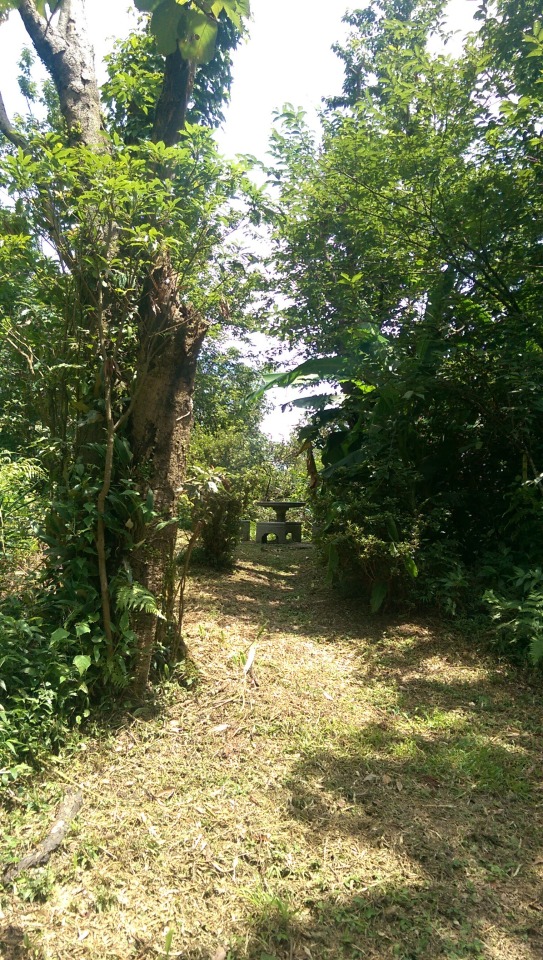

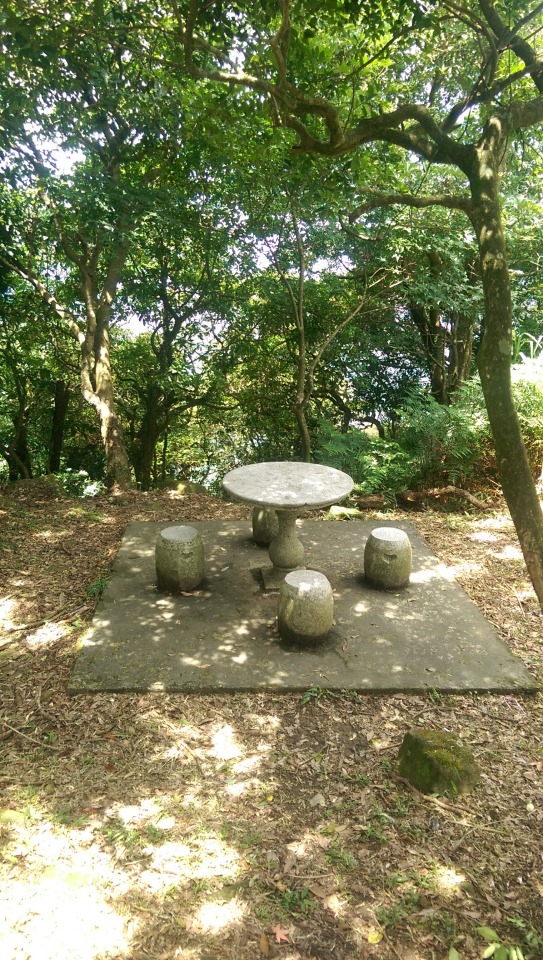
Although this trail is super busy, especially the first part from the temple to Dajian Mountain, it is now one of my favourites not just for the views but the variety of trekking environments and paths. I usually get tired very quickly of trails that are only straight up and then straight down the same path, preferring instead a mixture of flat and rise, paved and mud, open and covered. This one was also special for the little details, especially the butterflies. Whether you’re a Taiwan old hand or new to the country and you find yourself in the north with a bright clear morning to spare, I highly recommend spending a couple of hours to do this trail, one of the best I’ve walked so far.
(Hints: the best time of year to do this trail would probably be in October when the weather is still very warm but cooler with a breeze and the skies are clearer. Go very early in the morning (e.g. start at 4am) to get the sunrise at Dajian Mountain. You may need to get a taxi to the temple starting point as I think public transport is limited on that road. Some parts of the trail are fairly rough and require careful navigation and watch out for the wasp/hornets that occupy two or three places along the route)

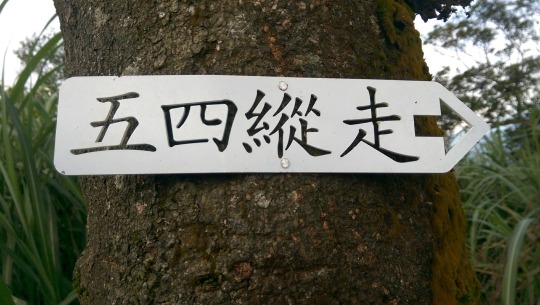


3 notes
·
View notes
Text
Settling in
我住的套房是在大安區,臨江街夜市附近,離我���一次來臺北住的旅舍很近。我的窗戶是朝東的,正對着旭日與小港外高於其他建築的臺北101.
The apartment I’m renting is located in Da’an District very close to Linjiang Night Market, and very close to the hostel where I stayed the very first time I came to Taipei. My window opens East toward the rising sun and Taipei 101, which towers above the buildings across the little lane.
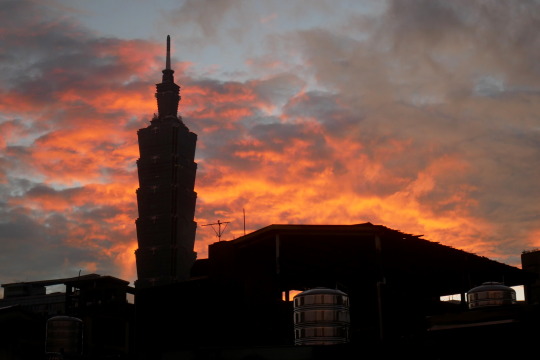
這天我決定待在附近,看看周圍有些什麼。前一天的健行讓我很累。待在附近看來成爲了一個很好的主意。
This day I decided to stay close and explore the neighborhood. The previous day’s hike was rather exhausting. Staying close turned out to be a good idea.
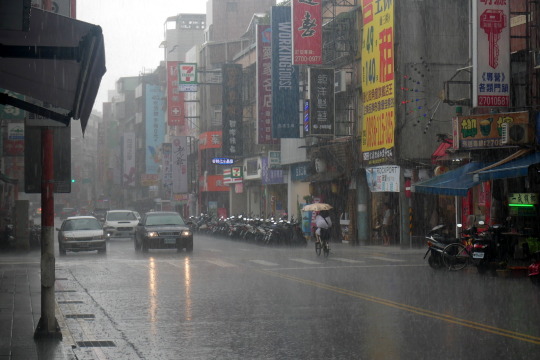
這是通化街,從我家過去走路只要一分鐘。這裡有一家電子店,一些手錶店,一個小超市等等。通化街跟別的馬路一樣有防雨的騎樓。
當天需要“跑”一趟做事。我的錶帶前一天早上壞了。我原來都沒注意到。若不是等在公車站的一個人指出躺在地上的我的手錶,我很可能會把它搞丟。當天早上我去一家正要開門的手錶店。門上寫着「每月第四星期日公休」。
我也需要印一些文章,所以尋一家印刷店。找到了一家,卻不敢進入。後來我上網找發現便利商店其實可以影印。
我也到超市去買一些生活品。
This is Tonghua Street. On this street, which is only a minute’s walk from where I live, is a small electronics store, a few watch stores, and a small supermarket, among others. As common on larger roads, half of the sidewalk is covered, providing refuge from the rain.
I had some errands to “run”. My watch strap broke the previous morning. I didn’t even notice. I probably wouldn’t have lost my watch if another person waiting at the bus stop hadn’t pointed it out as it lay on the ground. So, I went to a watch store right as it was about to open. The writing on the door said “closed every fourth Sunday of the month”.
I also needed to print some documents, so I looked for a print shop. The print shops looked intimidating. I then searched on-line and found out that printing can be done at any 7-11.
And I went to the supermarket to see what kinds of house things I could buy.
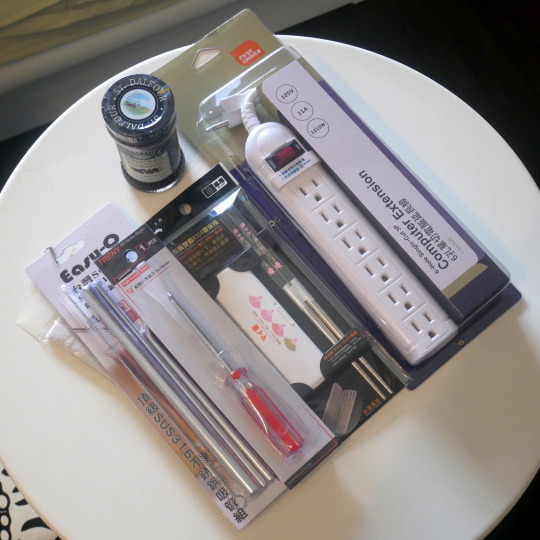
電線是自然要有的。環保筷子和吸管也是。(吸管有兩種:普通的和珍珠的。)
螺絲起子的唯一個目的是把熱水器的面板打開,關電。我懷疑它本來是加浴室的溫度。既然外面已經這麼熱,就不用洗熱水澡啦。
果醬的唯一個目的是讓我吃完前一天在大溪一時衝動買的難吃的餅乾。當然那果醬比餅乾貴。
我又出門了,這次是爲了到麪包店去買麪包。走路回去的時候發現那條路上到處賣家具。我對我自己開玩笑地想我不用買任何家具,但也許我可能買一片木製的切菜板?
The extension cord is self-explanatory. So are the travel chopsticks and drinking straws. (I care about the environment. Note that the drinking straws come in two sizes: regular and boba.)
The sole purpose of the screwdriver is to unscrew the safety cover on the water heater in order to turn it off. I suspected it was heating up the bathroom. Anyway, it doesn’t make sense to take hot showers when it’s already so hot outside.
The sole purpose of the jam is to eat the tasteless crackers I impulse-bought after coming out of the forest in Daxi. Naturally, the jam cost more than the crackers.
I went out again, to the bakery this time. On the way back, I found the furniture street. I joked to myself, I wouldn’t need to buy any furniture, but maybe I could get a nice wooden cutting board?
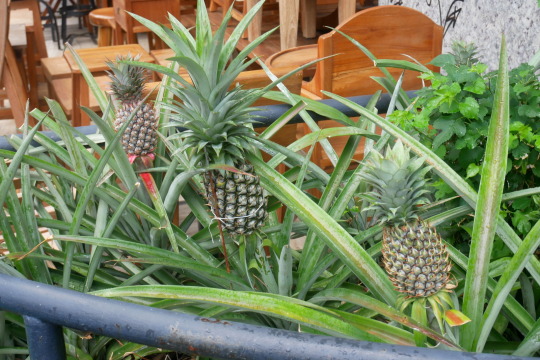
那天晚上我在一家義大利餐廳吃晚飯。一共US$25。那麼高的價格現在會讓我嚇一跳,但是剛來的我覺得不太高,就跟美國一樣。餐廳的氣氛很不錯,晚餐包括沙拉、義大利麪、茶、點心和麪包。
That evening, I splurged at an Italian restaurant. And that means my meal cost a little over US$25. That kind of price tag would give me sticker shock today, but I had just arrived, and it seemed normal, just about what I’d pay in the US. The atmosphere was nice, and I got a three-course meal with salad, pasta, and dessert, as well as bread.
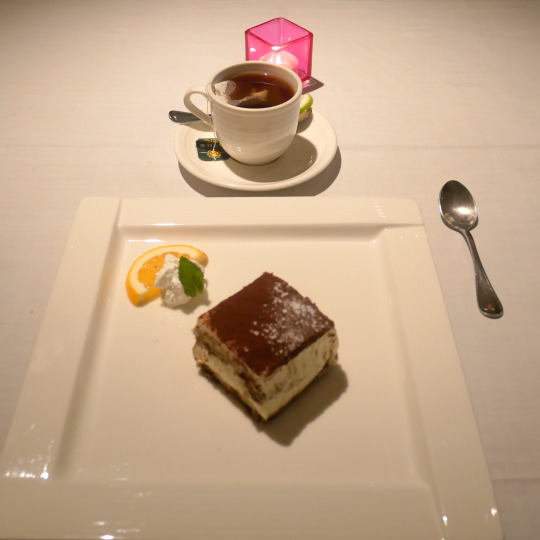

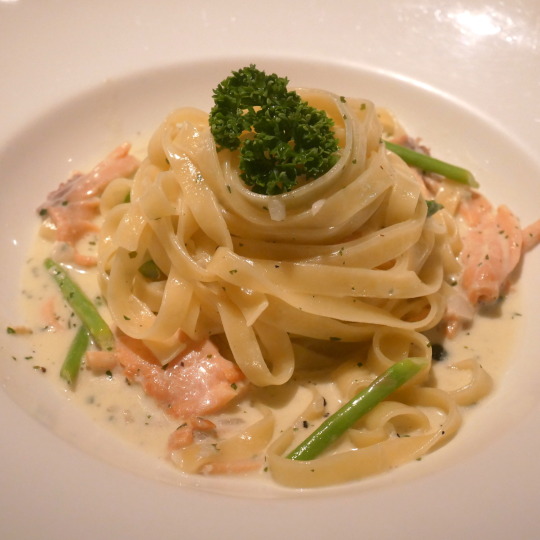
隔天我終於修了手錶,把舊的錶帶換到可愛的皮的錶帶(NT$500)。
The next day I finally fixed my watch, replacing the cheap original strap with a cute leather strap.
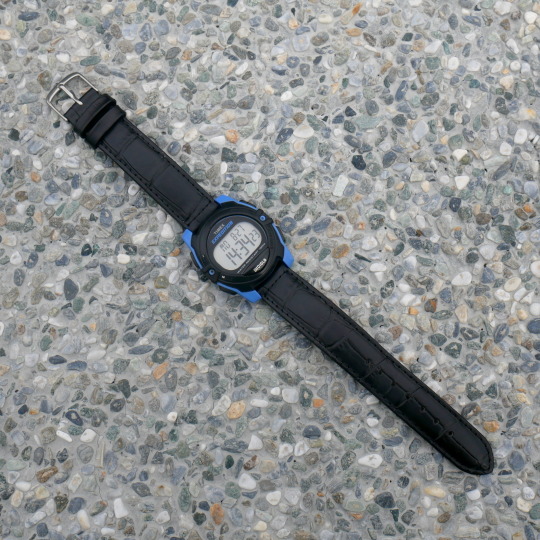
那天的天氣又不穩定,所以我決心了租YouBike隨便逛逛。就這樣到了南港公園。
I decided to rent a YouBike and just ride somewhere, as the weather was uncertain. Thus I ended up in Nangang Park.
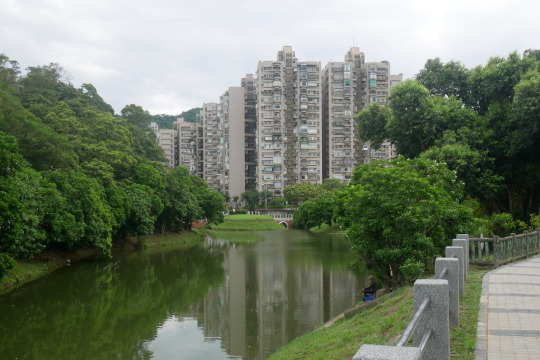

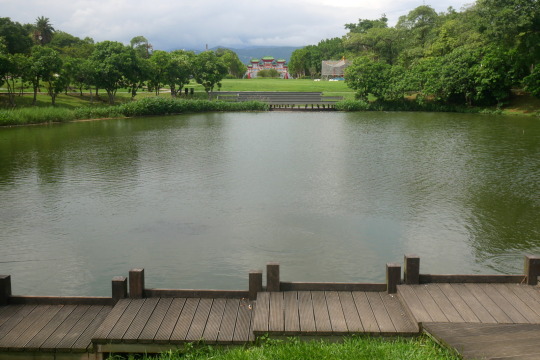
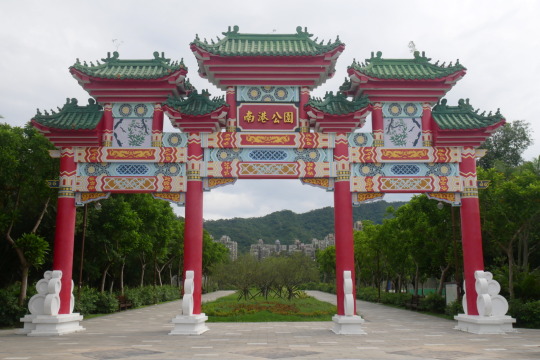
南港公園位於成福里。經過在公園與附近散步,我能了解“成福”的祕密:牛。
Nangang Park is located in the neighborhood of Chengfu (neighborhoods are an administrative division below district), which literally means “attain fortune”. After walking around the park and exploring the neighborhood, the secret to attaining fortune in this neighborhood became obvious: cows.
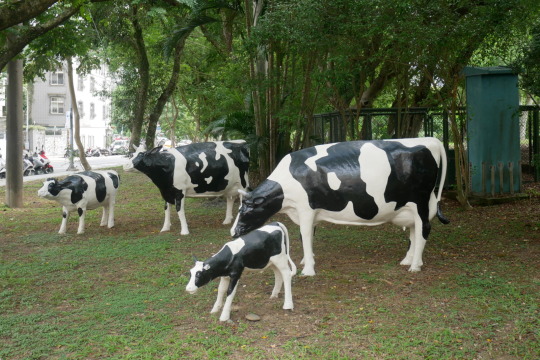
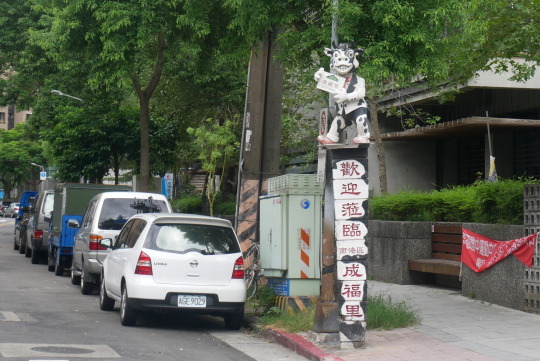
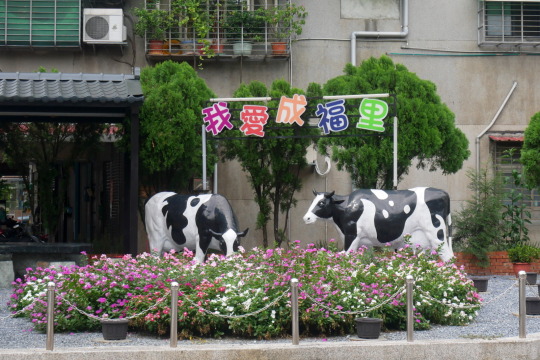
我決定了騎腳踏車沿着河濱回家。先騎到汐止。那裡找到了一條隱藏的進河濱公園的路。
I decided to bike home along the river, but first I rode East a bit, until Xizhi. There I found a somewhat-hidden entrance to the riverside path.

河濱公園的路很漂亮。 The river trail was pretty.
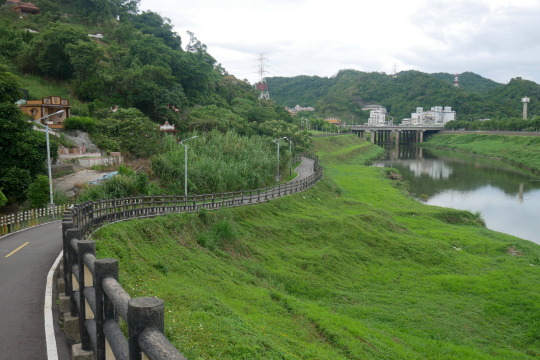
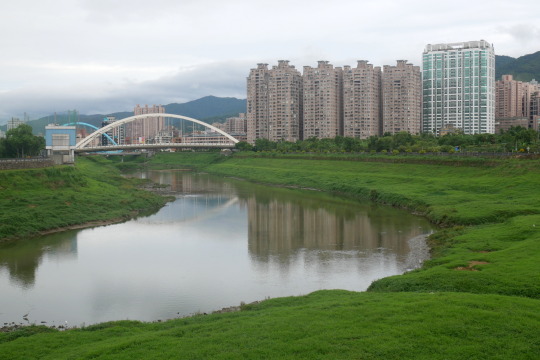
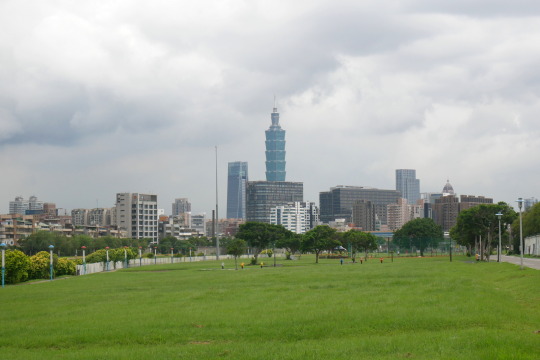
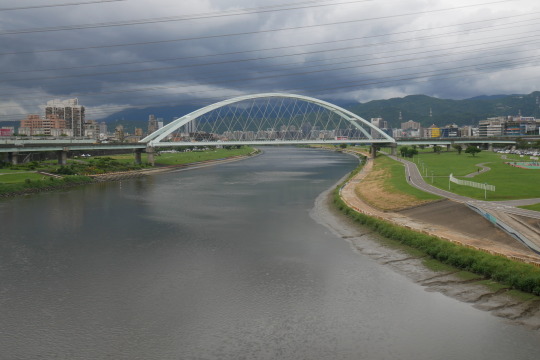
攝影最好的天氣是看起來會下雨,但結果不下雨。當天就是這樣。我最後過的橋是跟第一天從Costco回家的一樣的橋。我決定隔天,如果天氣好,就騎從基隆沿北海岸道到淡水。
The best weather for landscape photography is when it looks like it’s about to rain - but then it doesn’t. Today was such a day. And the last bridge I crossed (above) is the same one I crossed on day 1 as I returned home from Costco. I decided that the following day, if the weather is good, I would bike all the way along the North Coast Route from Keelung to Tamsui.
#taipei101#italianfood#tonghuastreet#nangang#park#chengfuli#cow#river#biking#bridge#xizhi#taiwan#臺北101#義大利麵#通化街#南港公園#成福里#牛#河濱公園#腳踏車#自行車#汐止#臺灣
0 notes
Text
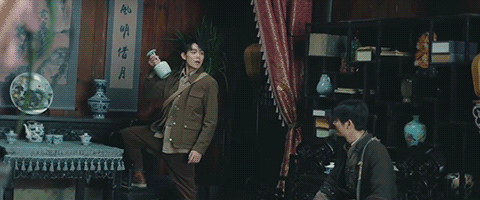

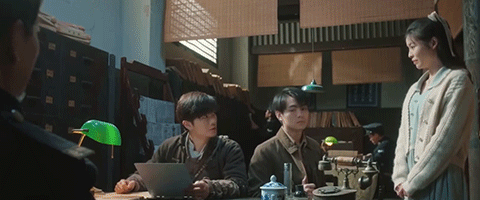
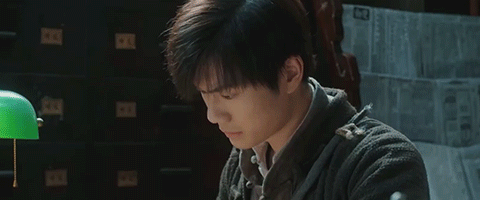
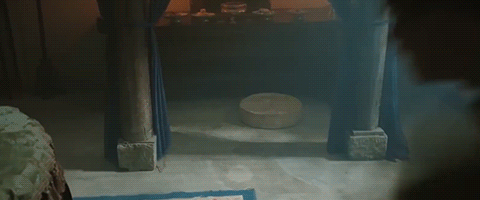
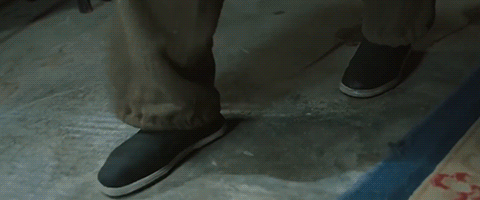
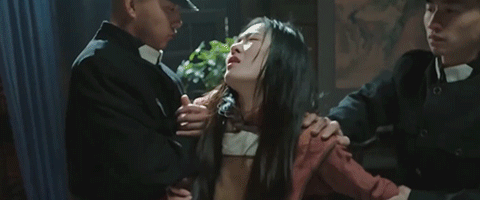

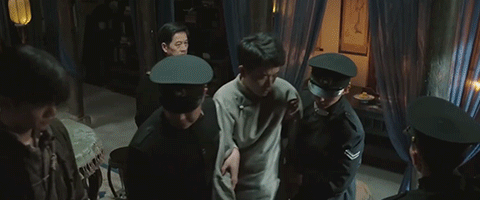
Yin-Yang Town Strange Talk | S01E03
Chinese Drama - 2024, 24 episodes
Episodes | Gaga | Viki | YouTube | iQIYI | WeTV | Tencent | Catalogue
#Drama: Yin-Yang Town Strange Talk#CDrama#Ghost-Seeing Male Lead#Adventure#Partners in Crime#Historical#Short Length Series#阴阳镇怪谈#Yin-Yang Town Strange Talk#Investigation#Sun Xizhi#Chinese Drama - 2024#Drama: 2024
11 notes
·
View notes